Cyclist safety
Our top road safety tips to help you cycle safely on our roads.
Cycling is a wonderful, healthy pastime and a great mode of transport for school, college or work. But as a cyclist, you’re a very vulnerable road user. So, it’s vital that you practice good road safety and take personal responsibility for keeping yourself, pedestrians and other road users safe on our roads.
/cycle-race.jpg?Status=Master&sfvrsn=b5c31384_3)
When cycling, always make sure you give other road users the best chance of seeing you. Wear high visibility clothing and keep your bicycle lights in good working order. You should also signal in plenty of time to allow others to react to your movements. Don't ever ride or attempt to ride a bicycle while under the influence of alcohol or drugs.
Remember, cyclists put themselves and others at risk when they do not stop as required at traffic lights.
Safe cycling
Our safe cycling series of videos will show you how to stay safe while cycling on our roads.
Useful information
Cycle Safety pdf | 3760 KBTop tips for cyclists
Your bicycle is a complex machine of solid and moving parts. Keeping it in perfect working order and condition is one of the best safety tips we can offer. If you look after your bike, it will help look after you.
It’s the law to have a bell on your bike at all times and to have working lights.
Our video below shows you how to carry out safety checks on your bicycle equipment. Cyclist safety equipment check video
You’ll also find information about keeping your bicycle roadworthy in our Cycle safety booklet
As a cyclist, you’re a vulnerable road user and your bicycle will not protect you if you have a crash. While the law does not require you to wear a helmet, in the interest of road safety and your personal protection, you should wear one at all times while cycling. It is an essential, life-saving piece of cycling equipment. For advice about choosing and fitting a helmet, please see our Cycle safety booklet.
-450-x-242-px/bicycle-accident.jpg?Status=Master&sfvrsn=90c3f89c_3)
When you carry children on bicycle trailers or child seats, you can often expose them to dangers on the road.
If you intend to use a child seat for carrying a child on your bicycle, make sure that it is fit for purpose and securely fitted by a competent person. Make sure your child is wearing a suitable cycle helmet and check that the seat’s restraining straps are in good condition. Be aware of the risk of your child’s feet getting caught in the wheel spokes. The seat should have secure foot straps. Ensure clothing like scarfs and shoe laces cannot get caught in the wheels.
/screenshot-2021-09-13-125258.png?Status=Master&sfvrsn=893141b3_1)
Bicycle trailers are generally low to the ground so HGV and car drivers may not be aware of them immediately behind the bike. Towing a trailer will also have an adverse effect on the handling of a bicycle. The way you corner may have to be adapted and stopping times may increase as a result of the increased weight of the trailer. In busy urban areas you will have to take account of the extra width, especially in cycle tracks where you might take up the full width of the lane.
As a cyclist you are a road user. That means obeying all Rules of the Road and road laws. If you do not obey the rules, you can be charged with cycling offences included in the fixed charge system. Here are some you should know about:
| Description of offence | Fixed charge |
| Cyclist driving a pedal cycle without reasonable consideration | €40 |
| No front lamp or rear lamp lit during lighting-up hours on a pedal cycle | €40 |
| Cyclist proceeding into a pedestrianised street or area | €40 |
| Cyclist proceeding past traffic lights when the red lamp is illuminated | €40 |
| Cyclist failing to stop for a school warden sign | €40 |
| Cyclist proceeding beyond a stop line, barrier or half-barrier at a railway level crossing, swing bridge or lifting bridge, when the red lamps are flashing. | €40 |
Signals are an indication of your intent; they do not give you right-of-way. The law requires you to signal properly before moving off, turning right or left, changing lanes, overtaking, slowing down or stopping. You must signal clearly and in good time.
Here are the signals you should use for traffic coming from behind:
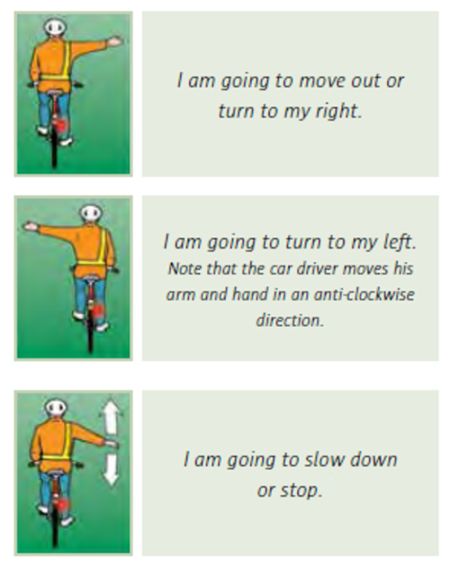
Here are the signals you should use for oncoming traffic:
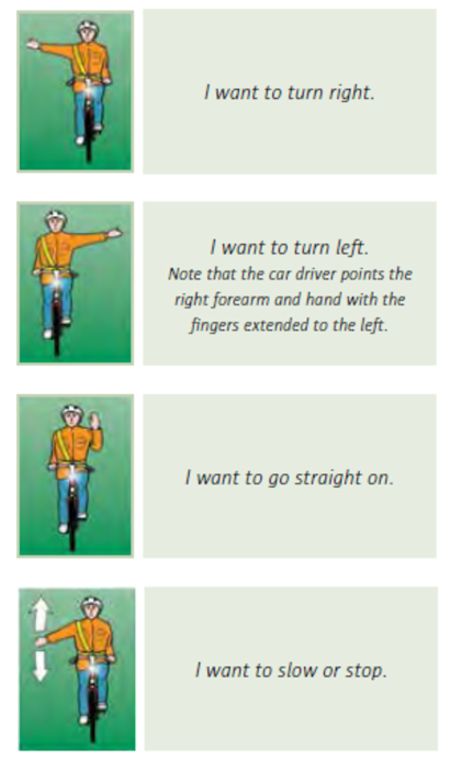
Our research shows that children do not perfect the skills necessary to safely interact with traffic until they are over the age of 12 years. Before this age, their judgement skills and perception of speed and distance have not yet been fully developed. For these reasons they need help to cycle safely on the road.
Cycle Right, our cycle training programme, offers a range of videos designed to help children master the basics of cycling safely.
Rules of the Road
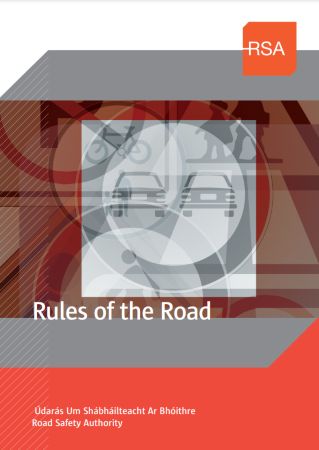
Our Rules of the Road includes tips and advice on staying safe on our roads.
Cycling road safety campaigns
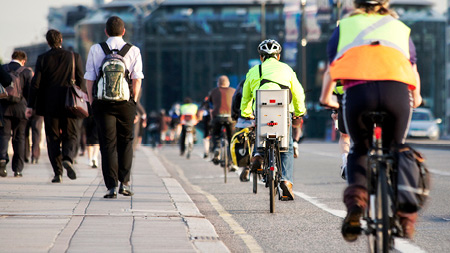
We have run many cycling road safety campaigns to help you stay safe on Irish roads.
Booklets and Posters
Our cycle safely leaflets and booklets offer more advice on cycling safety for everyone.
Download and read our Cycle safety booklet
Order a free copy of our Cycle Safety Poster
You can also get a free copy of these cycle safety leaflets and booklets when you order other road safety materials from us.
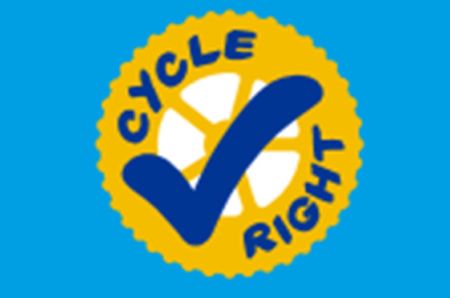
Cycle Right is the national standard for cycle training and provides practical cycle safety and skills training to promote competent and confident cyclists.
The programme is produced and supported by the Department of Transport, Tourism and Sport, the Road Safety Authority and Cycling Ireland, with input from central and local agencies and other groups.
Cycle Right is delivered over three stages with participants gaining skills and knowledge on a phased basis which prepares the individual to cycle in increasingly complex road scenarios. Ideally, individual sessions in each stage should be delivered at weekly intervals to allow sufficient time for practice in between.

/cycle-safety.tmb-.jpg)









.tmb-.jpg)

